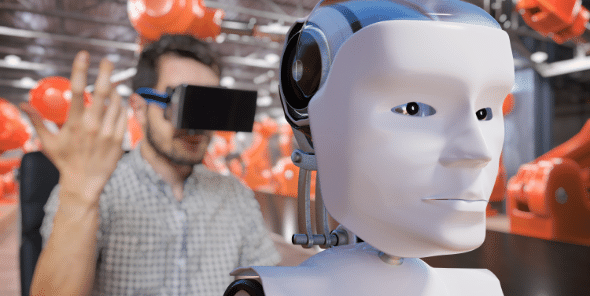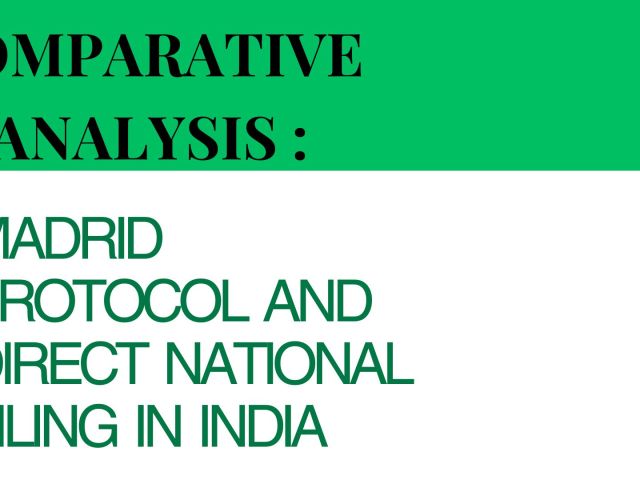In an effort to maintain the leadership in innovation in emerging technologies, including artificial intelligence (AI), USPTO has been actively engaging with the innovation community and experts in AI to promote the understanding and reliability of intellectual property rights with respect to the technology. On this note, USPTO issued two separate requests for comments (RFC) in the year 2019 seeking feedback from various stakeholders on issues related to the impact of AI on patent policy and other IP policy areas, including copyrights, trademarks, database protection, and trade secret laws. USPTO received an incredible response ranging about 200 comments from a wide range of commentators i.e. stakeholders, including individuals, bar associations, industry associations, corporations, academia, and foreign IP offices. Based on the response, a team of experts across the USPTO generated the 2020 report.[1] The report is mainly divided into two parts, wherein part 1 focusing on AI in context to patenting, while part 2 is focussed on AI in context to non-patent IP protection such as trademarks, copyrights, and trade secrets.
The outcome of the report tends to observe and summarize the developing nature of AI and its interplay with the existing IP regimes. Further, the report attempts to deal with the specifics in regard to the USPTO’s interpretations of AI and its related aspects and further asks the commentators for suggestions in order to fill the void faced by the stakeholders in the field of AI.
PART 1 RESPONSES TO THE RFC ON PATENTING AI BASED INVENTIONS
A summary of comments from various commentators/stakeholders was received in response to the RFC on patenting AI inventions (Part 1) issued on August 27, 2019. Some of the highlighting questions and their corresponding comments are as follows:
What are the elements of an AI invention? This question sought to identify broadly the elements of an AI invention that may be subject to patentability. Among the responses, one of the answers stated “AI can be understood as computer functionality that mimics cognitive functions associated with the human mind (e.g., the ability to learn)”.[2] However, while attempting to define AI, the majority agreed that the current state of the art is limited to “narrow” AI.
What are the different ways that a natural person can contribute to the conception of an AI invention and be eligible to be a named inventor? According to the developing stage of AI, it may offer many opportunities e.g. designing an algorithm to the AI, configuring particular hardware to enhance an AI algorithm, or applying methods of preparing inputs to an AI algorithm. The current legal standpoint requires that a determination be made as to who has legally contributed to the conception of an AI invention and can be named as an inventor.
Should an entity or entities other than a natural person, or company to which a natural person assigns an invention, be able to own a patent on the AI invention? Usually, the original applicant is presumed to be the owner of an application for an original patent unless there is an assignment. However, the vast majority of responses stated the U.S. law capable of dealing with the issue of ownership and upheld the current legal standpoint.
Are there any patent eligibility considerations unique to AI inventions? Patent laws lay down certain general statutory exceptions with respect to the subject-matter which are not patentable e.g. subject-matter against laws of nature, natural phenomena, and abstract ideas. Thus many responses asserted that there are no patent eligibility considerations unique to AI inventions[3]e. AI inventions should not be treated distinctly from other computer-based or implemented inventions and the basic principles of patent laws should be made applicable.
Are there any prior art considerations unique to AI inventions? The prior art information plays a fundamental role in any patent regime. Thus considering the prior art and its impact on AI is very much relevant in the patent Prior art documents which are retrieved by the examiner ultimately determine whether a claimed invention is novel or non-obvious. Thus, the majority responded to the question that there was no prior art consideration unique to AI inventions.
PART 2 RESPONSES TO THE RFC ON INTELLECTUAL PROPERTY PROTECTION FOR AI INNOVATION
Following are some important responses which were been received by the commentators upon the impact of AI on IP policy areas other than patent law, including copyrights, trademarks, database protection, trade secret laws against the RFC issued on October 30, 2019:
+ Should a work produced by an AI algorithm or process, without the involvement of a natural person contributing expression to the resulting work, qualify as a work of authorship protectable under U.S. copyright law? The U.S. Copyright laws do not grant copyright protection to a work created without human involvement. This essential norm for the involvement of a natural person has been recognized in various international legal documents such as the Berne Convention and TRIPs Agreement. Hence, the majority agreed and acknowledged the existing norm of human involvement merely for the purpose to support legal incentives for human creators to create new works.[4]
+ Would the use of AI in trademark searching impact the registrability of trademarks? The current trademark regime operates through the human-assigned design codes (Vienna classification) in order to index and classify the incoming marks. However, it has been observed that the AI-based software could simplify the task of assigning design codes thereby supplementing the human process. Most of the commentators supported the idea of using AI software to improve the examination searching efficiency.
CONCLUSION
A lot of factors with respect to the development of AI-based technology and rising IP implication have been discussed and considered under this USPTO report. Thus indicating the intention of Intellectual Property Offices around the world to be in line with the upcoming future technologies and adapt the changes in order to promote innovation and safeguard the interest of inventors and creators in the field of AI.
[1] https://www.uspto.gov/sites/default/files/documents/USPTO_AI-Report_2020-10-07.pdf, last visited on 28/10/2020.
[2] Response from IBM (Nov. 8, 2019), at 2; Response from Juniper Networks, at 1; Response from Schwegman Lundberg & Woessner, P. A., at 1.
[3] Response from IPO (Nov. 11, 2019), at 7-8; Response from Ford, at 1.
[4] Response from ABAB IPL (Jan. 9, 2020), at 4-5; Response from IPO (Jan. 10, 2020), at 2.




